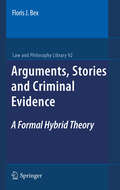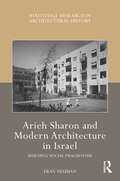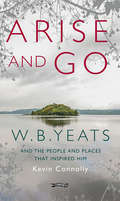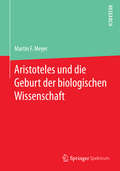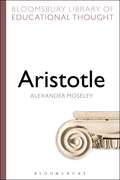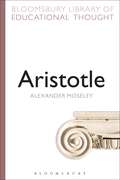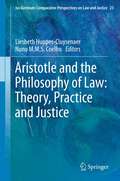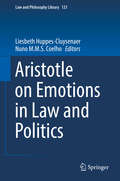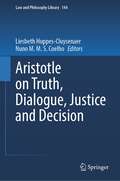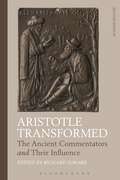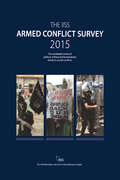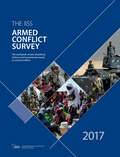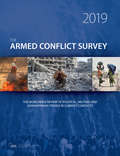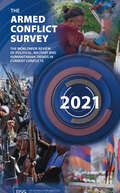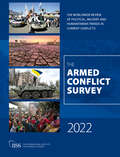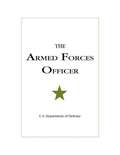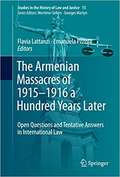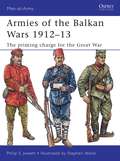- Table View
- List View
Arguments, Stories and Criminal Evidence: A Formal Hybrid Theory (Law and Philosophy Library #92)
by Floris J. BexIn this book a theory of reasoning with evidence in the context of criminal cases is developed. The main subject of this study is not the law of evidence but rather the rational process of proof, which involves constructing, testing and justifying scenarios about what happened using evidence and commonsense knowledge. A central theme in the book is the analysis of ones reasoning, so that complex patterns are made more explicit and clear. This analysis uses stories about what happened and arguments to anchor these stories in evidence. Thus the argumentative and the narrative approaches from the research in legal philosophy and legal psychology are combined. Because the book describes its subjects in both an informal and a formal style, it is relevant for scholars in legal philosophy, AI, logic and argumentation theory. The book can also appeal to practitioners in the investigative and legal professions, who are interested in the ways in which they can and should reason with evidence.
Arieh Sharon and Modern Architecture in Israel: Building Social Pragmatism (Routledge Research in Architectural History)
by Eran NeumanArieh Sharon and Modern Architecture in Israel: Building Social Pragmatism offers the first comprehensive survey of the work of Arieh Sharon and analyzes and discusses his designs and plans in relation to the emergence of the State of Israel. A graduate of the Bauhaus, Sharon worked for a few years at the office of Hannes Mayer before returning to Mandatory Palestine. There, he established his office which was occupied in its first years in planning kibbutzim and residential buildings in Tel Aviv. After the establishment of the State of Israel in 1948, Arieh Sharon became the director and chief architect of the National Planning Department, where he was asked to devise the young country’s first national masterplan. Known as the Sharon Plan, it was instrumental in shaping the development of the new nation. During the 1950s and 1960s, Sharon designed many of Israel’s institutions, including hospitals and buildings on university campuses. This book presents Sharon’s exceptionally wide range of work and examines his perception of architecture in both socialist and pragmatist terms. It also explores Sharon’s modernist approach to architecture and his subsequent shift to Brutalist architecture, when he partnered with Benjamin Idelson in the 1950s and when his son, Eldar Sharon, joined the office in 1964. Thus, the book contributes a missing chapter in the historiography of Israeli architecture in particular and of modern architecture overall. This book will be of interest to researchers in architecture, modern architecture, Israel studies, Middle Eastern studies and migration of knowledge.
Arieh Sharon and Modern Architecture in Israel: Building Social Pragmatism (Routledge Research in Architectural History)
by Eran NeumanArieh Sharon and Modern Architecture in Israel: Building Social Pragmatism offers the first comprehensive survey of the work of Arieh Sharon and analyzes and discusses his designs and plans in relation to the emergence of the State of Israel. A graduate of the Bauhaus, Sharon worked for a few years at the office of Hannes Mayer before returning to Mandatory Palestine. There, he established his office which was occupied in its first years in planning kibbutzim and residential buildings in Tel Aviv. After the establishment of the State of Israel in 1948, Arieh Sharon became the director and chief architect of the National Planning Department, where he was asked to devise the young country’s first national masterplan. Known as the Sharon Plan, it was instrumental in shaping the development of the new nation. During the 1950s and 1960s, Sharon designed many of Israel’s institutions, including hospitals and buildings on university campuses. This book presents Sharon’s exceptionally wide range of work and examines his perception of architecture in both socialist and pragmatist terms. It also explores Sharon’s modernist approach to architecture and his subsequent shift to Brutalist architecture, when he partnered with Benjamin Idelson in the 1950s and when his son, Eldar Sharon, joined the office in 1964. Thus, the book contributes a missing chapter in the historiography of Israeli architecture in particular and of modern architecture overall. This book will be of interest to researchers in architecture, modern architecture, Israel studies, Middle Eastern studies and migration of knowledge.
Arise And Go: W.B. Yeats and the people and places that inspired him
by Kevin ConnollyThe idea of place runs like a river through the life and works of the poet and playwright W.B. Yeats. This book focuses on his time in Dublin, London, Sligo and elsewhere in the west of Ireland, embracing the homes, landscapes and people that impacted his life and stimulated his vast body of work. Meet the poet’s father, the struggling artist John Butler Yeats; his mother Susan, the well-to-do Sligo girl who had no choice but to follow her husband’s path; his five siblings: Lily and Lolly, guiding lights in the Irish Arts and Crafts movement; Jack, the renowned painter; and Bobbie and Jane Grace, who died in infancy. Meet William Morris, John O’Leary, Katharine Tynan, George Moore, Oscar Wilde, Lady Gregory, Douglas Hyde, George Hyde-Lees, and, of course, Maud Gonne, as well as countless others who helped weave the cloth of Yeats’s poetic gift.
Aristoteles und die Geburt der biologischen Wissenschaft
by Martin F. MeyerMartin F. Meyer untersucht die Entwicklung des lebenswissenschaftlichen Denkens von den frühsten Anfängen bis zur Geburt der wissenschaftlichen Biologie bei Aristoteles. Der Autor zeigt im ersten Teil, wie sich zentrale biologische Begriffe (Leben, Lebewesen, Mensch, Tier, Pflanze) im frühgriechischen Denken, bei den Vorsokratikern und in der sogenannten Hippokratischen Medizin entwickelt haben. Im zweiten Teil beleuchtet er die Ziele, Methoden und die Systematik der von Aristoteles begründeten Biologie im Kontext seines naturwissenschaftlichen Programms.
Aristotle (Bloomsbury Library of Educational Thought)
by Alexander MoseleyAristotle is often underrated in educational circles but the impact of his philosophy and his actions are evident in the schools and universities around us today. Aristotle developed the first proper university that had different departments and vast collections of texts and artefacts. His philosophy has also influenced the greatest minds since his time, from Aquinas to today's logicians, rationalists, and empiricists. The influence of his educational thinking and his philosophy in general helped underpin the Renaissance and the modern era. In a nutshell, Aristotle took our thinking and said, 'make it sharper.' Alexander Moseley offers a thorough and comprehensive overview of the works of Aristotle and explores the influence of his thought and writings and their impact on our education systems today.
Aristotle (Continuum Library of Educational Thought)
by Alexander Moseley Richard BaileyAristotle is often underrated in educational circles but the impact of his philosophy and his actions are evident in the schools and universities around us today. Aristotle developed the first proper university that had different departments and vast collections of texts and artefacts. His philosophy has also influenced the greatest minds since his time, from Aquinas to today's logicians, rationalists, and empiricists. The influence of his educational thinking and his philosophy in general helped underpin the Renaissance and the modern era. In a nutshell, Aristotle took our thinking and said, 'make it sharper.' Alexander Moseley offers a thorough and comprehensive overview of the works of Aristotle and explores the influence of his thought and writings and their impact on our education systems today.
Aristotle and The Philosophy of Law: Theory, Practice and Justice (Ius Gentium: Comparative Perspectives on Law and Justice)
by Liesbeth Huppes-Cluysenaer and Nuno M.M.S. CoelhoThe book presents a new focus on the legal philosophical texts of Aristotle, which offers a much richer frame for the understanding of practical thought, legal reasoning and political experience. It allows understanding how human beings interact in a complex world, and how extensive the complexity is which results from humans’ own power of self-construction and autonomy. The Aristotelian approach recognizes the limits of rationality and the inevitable and constitutive contingency in Law. All this offers a helpful instrument to understand the changes globalisation imposes to legal experience today.The contributions in this collection do not merely pay attention to private virtues, but focus primarily on public virtues. They deal with the fact that law is dependent on political power and that a person can never be sure about the facts of a case or about the right way to act. They explore the assumption that a detailed knowledge of Aristotle's epistemology is necessary, because of the direct connection between Enlightened reasoning and legal positivism. They pay attention to the concept of proportionality, which can be seen as a precondition to discuss liberalism.
Aristotle on Emotions in Law and Politics (Law and Philosophy Library #121)
by Liesbeth Huppes-Cluysenaer Nuno M.M.S. CoelhoIn this book, experts from the fields of law and philosophy explore the works of Aristotle to illuminate the much-debated and fascinating relationship between emotions and justice. Emotions matter in connection with democracy and equity – they are relevant to the judicial enforcement of rights, legal argumentation, and decision-making processes in legislative bodies and courts. The decisive role that emotions, feelings and passions play in these processes cannot be ignored – not even by those who believe that emotions have no legitimate place in the public sphere. A growing body of literature on these topics recognizes the seminal insights contributed by Aristotle. This book offers a comprehensive analysis of his thinking in this context, as well as proposals for inspiring dialogues between his works and those written by a selection of modern and contemporary thinkers. As such, the book offers a valuable resource for students of law, philosophy, rhetoric, politics, ethics and history, but also for readers interested in the ongoing debate about legal positivism and the relevance of emotions for legal and political life in today’s world.
Aristotle on Truth, Dialogue, Justice and Decision (Law and Philosophy Library #144)
by Liesbeth Huppes-Cluysenaer Nuno M. M. S. CoelhoIn this thought-provoking book, you’ll find timeless questions explored through a fresh lens. First delving into the profound significance of Socrates’ dialogical method and the inescapable nature of conflict, it ponders the rational capacities of humanity in terms of establishing harmonious communities. But this isn’t merely a philosophical debate; it’s a pragmatic exploration of real-world challenges.No longer limiting itself to abstract theories, the book then seeks to navigate the practical terrain of science and politics. Drawing inspiration from Aristotle, renowned for his investigations into the intricate connections between theory, technology, ethics, and politics, it tackles the essential question: How can we reconcile divergent views?At the book’s core lies Aristotle’s revolutionary concept of dialogue, which portrays truth as a delicate equilibrium between opposing forces, transcending the rigid boundaries of true and false. Join this captivating journey as the author reveals the hidden paths to meaningful coexistence in a world filled with conflicting perspectives.
Aristotle Transformed: The Ancient Commentators and Their Influence
by Richard SorabjiThis book brings together twenty articles giving a comprehensive view of the work of the Aristotelian commentators. First published in 1990, the collection is now brought up to date with a new introduction by Richard Sorabji. New generations of scholars will benefit from this reissuing of classic essays, including seminal works by major scholars, and the volume gives a comprehensive background to the work of the project on the Ancient Commentators on Aristotle, which has published over 100 volumes of translations since 1987 and has disseminated these crucial texts to scholars worldwide.The importance of the commentators is partly that they represent the thought and classroom teaching of the Aristotelian and Neoplatonist schools and partly that they provide a panorama of a thousand years of ancient Greek philosophy, revealing many original quotations from lost works. Even more significant is the profound influence – uncovered in some of the chapters of this book – that they exert on later philosophy, Islamic and Western. Not only did they preserve anti-Aristotelian material which helped inspire Medieval and Renaissance science, but they present Aristotle in a form that made him acceptable to the Christian church. It is not Aristotle, but Aristotle transformed and embedded in the philosophy of the commentators that so often lies behind the views of later thinkers.
Aristotle Transformed: The Ancient Commentators and Their Influence
by Richard SorabjiThis book brings together twenty articles giving a comprehensive view of the work of the Aristotelian commentators. First published in 1990, the collection is now brought up to date with a new introduction by Richard Sorabji. New generations of scholars will benefit from this reissuing of classic essays, including seminal works by major scholars, and the volume gives a comprehensive background to the work of the project on the Ancient Commentators on Aristotle, which has published over 100 volumes of translations since 1987 and has disseminated these crucial texts to scholars worldwide.The importance of the commentators is partly that they represent the thought and classroom teaching of the Aristotelian and Neoplatonist schools and partly that they provide a panorama of a thousand years of ancient Greek philosophy, revealing many original quotations from lost works. Even more significant is the profound influence – uncovered in some of the chapters of this book – that they exert on later philosophy, Islamic and Western. Not only did they preserve anti-Aristotelian material which helped inspire Medieval and Renaissance science, but they present Aristotle in a form that made him acceptable to the Christian church. It is not Aristotle, but Aristotle transformed and embedded in the philosophy of the commentators that so often lies behind the views of later thinkers.
Armed Conflict Survey (Armed Conflict Survey Ser.)
by Nigel InksterThis book provides data on fatalities, refugees and separated people for all major armed conflicts in the Middle East, Sub-Saharan Africa, South Asia, Asia-Pacific, Europe and Eurasia, and Latin America in 2015, alongside in-depth analysis of their political, military and humanitarian dimensions.
Armed Conflict Survey (Armed Conflict Survey Ser.)
by The International The International Institute for Strategic Studies (IISS),This book provides data on fatalities, refugees and separated people for all major armed conflicts in the Middle East, Sub-Saharan Africa, South Asia, Asia-Pacific, Europe and Eurasia, and Latin America in 2015, alongside in-depth analysis of their political, military and humanitarian dimensions.
Armed Conflict Survey 2017 (Armed Conflict Survey Ser.)
by The International Institute for Strategic StudiesThe Armed Conflict Survey provides in-depth analysis of the political, military and humanitarian dimensions of all major armed conflicts, as well as data on fatalities, refugees and internally displaced persons. Compiled by the IISS, publisher of The Military Balance, it is the standard reference work on contemporary conflict. The book assesses key developments in 36 conflicts, including those in Iraq, Syria, Afghanistan, South Sudan, Israel–Palestine, Southern Thailand, Colombia and Ukraine.The Armed Conflict Survey also features chapters on UN peacekeeping; sexual violence; the Islamic State’s shifting narrative; governance by armed groups and rebel-to-party transitions.
Armed Conflict Survey 2017 (Armed Conflict Survey Ser.)
by The International The International Institute for Strategic Studies (IISS),The Armed Conflict Survey provides in-depth analysis of the political, military and humanitarian dimensions of all major armed conflicts, as well as data on fatalities, refugees and internally displaced persons. Compiled by the IISS, publisher of The Military Balance, it is the standard reference work on contemporary conflict. The book assesses key developments in 36 conflicts, including those in Iraq, Syria, Afghanistan, South Sudan, Israel–Palestine, Southern Thailand, Colombia and Ukraine.The Armed Conflict Survey also features chapters on UN peacekeeping; sexual violence; the Islamic State’s shifting narrative; governance by armed groups and rebel-to-party transitions.
Armed Conflict Survey 2019
by The International Institute for Strategic StudiesThe Armed Conflict Survey provides in-depth analysis of the political, military and humanitarian dimensions of all major armed conflicts, as well as data on fatalities, refugees and internally displaced persons. Compiled by the IISS, publisher of The Military Balance, it is the standard reference work on contemporary conflict. The book assesses key developments in 36 high-, medium- and low-intensity conflicts, including those in Iraq, Syria, Afghanistan, South Sudan, Israel–Palestine, Southern Thailand, Colombia and Ukraine. The Armed Conflict Survey features essays by some of the world’s leading experts on armed conflict, including Mats Berdal, Elisabeth Jean Wood, Julia Bleckner, Nelly Lahoud, William Reno and Carrie Manning. They write on: • UN peacekeeping; • conflict-related sexual violence; • the Islamic State’s shifting narrative; • the changing foundations of governance by armed groups; and • rebel-to-party transitions. The authors’ discussion of principal thematic and cross-national trends complements the detailed analysis of each conflict at the core of the book. The Armed Conflict Survey also includes maps, infographics and multi-year data, as well as the IISS Chart of Conflict.
Armed Conflict Survey 2019
by The International The International Institute for Strategic Studies (IISS)The Armed Conflict Survey provides in-depth analysis of the political, military and humanitarian dimensions of all major armed conflicts, as well as data on fatalities, refugees and internally displaced persons. Compiled by the IISS, publisher of The Military Balance, it is the standard reference work on contemporary conflict. The book assesses key developments in 36 high-, medium- and low-intensity conflicts, including those in Iraq, Syria, Afghanistan, South Sudan, Israel–Palestine, Southern Thailand, Colombia and Ukraine. The Armed Conflict Survey features essays by some of the world’s leading experts on armed conflict, including Mats Berdal, Elisabeth Jean Wood, Julia Bleckner, Nelly Lahoud, William Reno and Carrie Manning. They write on: • UN peacekeeping; • conflict-related sexual violence; • the Islamic State’s shifting narrative; • the changing foundations of governance by armed groups; and • rebel-to-party transitions. The authors’ discussion of principal thematic and cross-national trends complements the detailed analysis of each conflict at the core of the book. The Armed Conflict Survey also includes maps, infographics and multi-year data, as well as the IISS Chart of Conflict.
Armed Conflict Survey 2021
by The International Institute for Strategic StudiesThe Armed Conflict Survey is the annual review of the political, military and humanitarian dimensions of all active conflicts from the International Institute for Strategic Studies. It offers in-depth analysis of the drivers, dynamics and outlook of 34 current armed conflicts along with detailed information on conflict parties and more than 60 full-colour maps and infographics. The Armed Conflict Survey is an essential resource for those involved in security, foreign and humanitarian policymaking, and an indispensable handbook for anyone conducting serious analysis of armed conflict. Key features · Essays on global trends in armed conflict, with a focus on the changing nature of third-party intervention, the long aftermath of armed conflicts, and economic migration and forced displacement in a COVID-19 world. · Overviews of key events and political and military developments from January 2020–February 2021 for each conflict. · Strategic analysis of national and regional drivers and conflict outlooks. · Regional analyses with unique insights into the geopolitical and geo-economic threads linking conflicts across regions and globally. · Expanded information on conflict parties. · The Armed Conflict Global Relevance Indicator (ACGRI), an IISS proprietary indicator that combines measures of incidence and human impact with geopolitical impact to assess the global salience of armed conflicts. · Analysis of the humanitarian, social and economic impact of conflicts. · Conflict-specific trends, strategic implications and prospects for peace. · More than 60 full-colour maps, tables and infographics highlighting key conflict developments and data. · Key statistics on violent events, fatalities, military power, geopolitical salience, refugees and internally displaced persons. · The 2021 Chart of Armed Conflict, presenting information on conflict start dates, typologies and relevant refugee flows, as well as providing a visual overview of each conflict’s geopolitical relevance, looking at 2020 UN Security Council resolutions, multilateral missions and the involvement of third-party countries.
Armed Conflict Survey 2021
by The International The International Institute for Strategic Studies (IISS)The Armed Conflict Survey is the annual review of the political, military and humanitarian dimensions of all active conflicts from the International Institute for Strategic Studies. It offers in-depth analysis of the drivers, dynamics and outlook of 34 current armed conflicts along with detailed information on conflict parties and more than 60 full-colour maps and infographics. The Armed Conflict Survey is an essential resource for those involved in security, foreign and humanitarian policymaking, and an indispensable handbook for anyone conducting serious analysis of armed conflict. Key features · Essays on global trends in armed conflict, with a focus on the changing nature of third-party intervention, the long aftermath of armed conflicts, and economic migration and forced displacement in a COVID-19 world. · Overviews of key events and political and military developments from January 2020–February 2021 for each conflict. · Strategic analysis of national and regional drivers and conflict outlooks. · Regional analyses with unique insights into the geopolitical and geo-economic threads linking conflicts across regions and globally. · Expanded information on conflict parties. · The Armed Conflict Global Relevance Indicator (ACGRI), an IISS proprietary indicator that combines measures of incidence and human impact with geopolitical impact to assess the global salience of armed conflicts. · Analysis of the humanitarian, social and economic impact of conflicts. · Conflict-specific trends, strategic implications and prospects for peace. · More than 60 full-colour maps, tables and infographics highlighting key conflict developments and data. · Key statistics on violent events, fatalities, military power, geopolitical salience, refugees and internally displaced persons. · The 2021 Chart of Armed Conflict, presenting information on conflict start dates, typologies and relevant refugee flows, as well as providing a visual overview of each conflict’s geopolitical relevance, looking at 2020 UN Security Council resolutions, multilateral missions and the involvement of third-party countries.
Armed Conflict Survey 2022
by The International Institute for Strategic StudiesThe Armed Conflict Survey 2022 provides an exhaustive review of the political, military and humanitarian dimensions of 33 active armed conflicts globally in the period from 1 March 2021 to 30 April 2022. The review is complemented by a strategic analysis of national, regional and global drivers and conflict outlooks, providing unique insights into the geopolitical and geo-economic threads linking conflicts across the world, as well as into emerging flashpoints and political risks. This edition includes a special feature on climate security given the increasingly urgent need to understand the complex interlinkages between climate change, climate vulnerability and conflict amid accelerating global warming. Reflecting the growing importance of geopolitical factors in the current global conflict landscape, The Armed Conflict Survey 2022 features the IISS Armed Conflict Global Relevance Indicator, which compares the global relevance of armed conflicts in terms of their geopolitical impact, as well as their human impact and intensity. This edition also includes maps, infographics and key statistics, as well as the accompanying Chart of Armed Conflict.
Armed Conflict Survey 2022
The Armed Conflict Survey 2022 provides an exhaustive review of the political, military and humanitarian dimensions of 33 active armed conflicts globally in the period from 1 March 2021 to 30 April 2022. The review is complemented by a strategic analysis of national, regional and global drivers and conflict outlooks, providing unique insights into the geopolitical and geo-economic threads linking conflicts across the world, as well as into emerging flashpoints and political risks. This edition includes a special feature on climate security given the increasingly urgent need to understand the complex interlinkages between climate change, climate vulnerability and conflict amid accelerating global warming. Reflecting the growing importance of geopolitical factors in the current global conflict landscape, The Armed Conflict Survey 2022 features the IISS Armed Conflict Global Relevance Indicator, which compares the global relevance of armed conflicts in terms of their geopolitical impact, as well as their human impact and intensity. This edition also includes maps, infographics and key statistics, as well as the accompanying Chart of Armed Conflict.
The Armed Forces Officer
by U.S. Department of DefenseThis edition is a classic series of books of the same title. These books have provided a foundation of thought, conduct, standards, and duty for American commissioned officers. Available now to the general public, this new edition takes the series inspirational premise into the new century. It educates officers of all services, as well as civilians, about the fundamental moral-ethical requirements of being a commissioned officer in the armed forces of the United States.
The Armenian Massacres of 1915–1916 a Hundred Years Later: Open Questions and Tentative Answers in International Law (Studies in the History of Law and Justice #15)
by Flavia Lattanzi Emanuela PistoiaThis peer-reviewed book features essays on the Armenian massacres of 1915-1916. It aims to cast light upon the various questions of international law raised by the matter. The answers may help improve international relations in the region. In 1915-1916, roughly a million and a half Armenians were murdered in the territory of the Ottoman Empire, which had been home to them for centuries. Ever since, a dispute between Armenians and Turkey has been ongoing over the qualification of the massacres. The contributors to this volume examine the legal nature and consequences of this event. Their investigation strives to be completely neutral and technical. The essays also look at the broader issue of denial. For instance, in Turkey, public speech on the matter can still trigger criminal prosecution whereas in other European States denial of genocide, war crimes and crimes against humanity is criminalized. However, the European Court of Human Rights views criminal prosecution of denial of the Armenian massacres as unlawful. In addition, one essay considers a state’s obligation to remember by looking at lessons learnt from the Inter-American Court of Human Rights. Another contributor looks at a collective right to remember and some ideas to move forward towards a solution. Moreover, the book explores the way the Armenian massacres have affected the relationship between Turkey and the European Union.
Armies of the Balkan Wars 1912–13: The priming charge for the Great War (Men-at-Arms)
by Stephen Walsh Philip JowettIn 1912, the Balkan states formed an alliance in an effort to break free from the crumbling Ottoman Empire. Forming an army of some 645,000 troops from Greece, Bulgaria, Serbia and Montenego, they took on a force of 400,000 Turkish soldiers. Both sides were equipped with the latest weapons technology. This book looks at the diverse and sometimes colourful uniforms worn by both sides, paying special attention to insignia, weapons and equipment. It also gives an overview of the campaigns that became a 'priming pan' of World War I.
